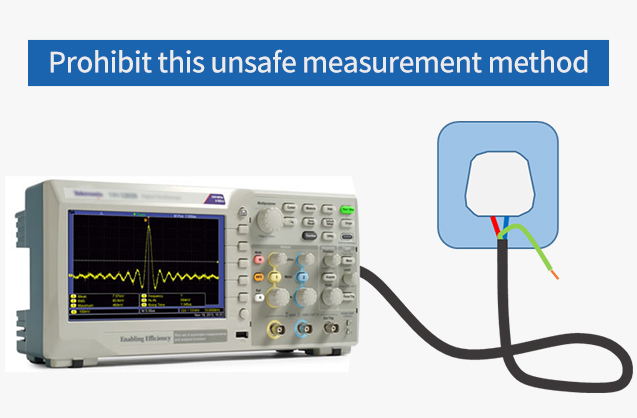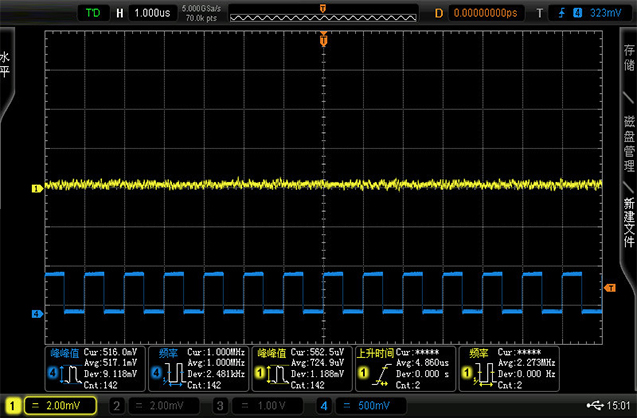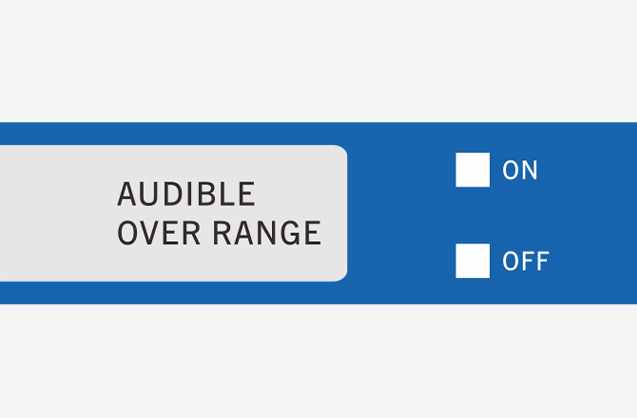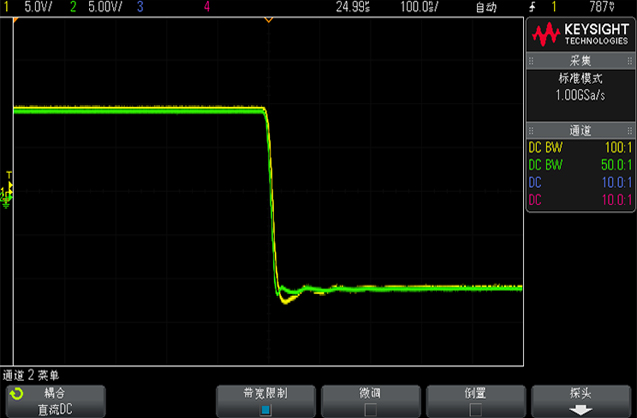TR1007A high-voltage differential probes are available for all major oscilloscopes in the market, converting a floating signal to a low-voltage signal at the ground level, making it safe and easy to display any reference ground level oscilloscope. The probe can be used at frequencies up to 70MHz for 700V voltage signals and has high common-mode rejection, making it an excellent choice for non-georeferenced, floating, or isolated measurements. Angstrom oscilloscope differential probes are ideal for power testing, switching power supplies, inverters, motor drive control, switching power supply development, maintenance and evaluation.
Features:
• Safe floating measurements
• No damage to the oscilloscope and device under test
• Strong anti-interference ability
• Audible and visual alarm function
• 5MHz bandwidth limit function selection
• Good common-mode noise rejection
 |
High performance differential probeSay goodbye to complex settings! BNC plug-and-play design simplifies workflow,. Users can take power through the USB-C power supply or oscilloscope port, flexible to adapt to the mobile detection environment. One-handed operation can complete the inverter pulse signal capture, improve the efficiency of automotive electronic diagnosis. |
Measuring advantagesWhen measuring PCIe 4.0 differential signals, the probe's 70MHz bandwidth and ≤ 5ns rise time accurately restore 200mV eye diagram, and the input capacitance <2pF avoids ground bounce effect. The isolation layer of the isolation substrate realizes the isolation impedance of 10 12Ω, which can not only guarantee the signal transmission but also guarantee the zero common ground damage between the oscilloscope and the board card to be tested. |
 |
 |
CMRR Common Mode Rejection Capability20mVrms low noise works with 80dB CMRR. Hall effect technology combined with dynamic compensation algorithm can realize 2% precision signal acquisition in industrial automation control system, and provide closed-loop feedback without drift for PLC control system. |
Overlimit alarmOne-button sound and light alarm control function: press the button for the first time to light up the operation indicator (ON LED) and activate the over-limit alarm system. When the measured signal exceeds the preset threshold, double alarm will be given through buzzer sound and visual indication. Press the button again to switch to silent mode and disable sound prompt. |
 |
 |
Fast signal measurementIn high-speed falling edge measurement, the traditional probe is prone to ringing distortion due to insufficient bandwidth or load effect, resulting in waveform overshoot and oscillation. This product adopts differential architecture and broadband response design, which can accurately capture sub-nanosecond edge characteristics and effectively suppress reflected waves and parasitic oscillations. Through the built-in de-embedding algorithm and adjustable attenuation ratio, it is especially suitable for switching characteristics analysis of SiC/GaN devices and dead time optimization of motor controllers, providing a distortion-free measurement solution for dynamic response verification of high frequency power conversion systems. |
| Model | TR1007A |
| Bandwidth (-3dB) | 70MHz |
| Rise time | ≤5ns |
| Precision | ±2% |
| Range selection (attenuation ratio) | 10X/100X |
| Maximum differential measurement voltage | 10X:±70V DC+ Peak AC 100X:±700V DC+ Peak AC |
| Common-mode voltage | ±700V DC + Peak AC |
| Maximum input voltage to ground | 450VCATⅡ 600VCATⅠ Vrms |
| Input impedance | Single-ended to ground: 2.5MΩ±1% Between Inputs: 5MΩ±1% |
| Input capacitance | Single-ended to ground: <4pF Between the two inputs:<2pF |
| CMRR | DC: >80dB 100KHz: >60dB 1MHz: >50dB 3.2MHz: >30dB 50MHz: >26dB |
| Noise level | 10X: <20mVrms 100X: <120mVrms |
| Overload indication voltage threshold | 10X: ≥70V 100X: ≥700V |
| Bandwidth limit (5MHz) long | ≥-3dB@5MHz |
| Overload indicator | have(Red light) |
| Overload alarm sound | have(optionally closed) |
| Auto-save function | have |
| Offset adjustable function | have (adjusted in test mode) |
| Terminal load requirements | ≥100kΩ |
| Power supply | USB 5V/1A adapter |
| Safety meets standards | EN61010-1:2010 |
| EMC is compliant | EN61326-1:2013 EN61000-3-3:2013 |
There are currently no application cases available
There are currently no films available